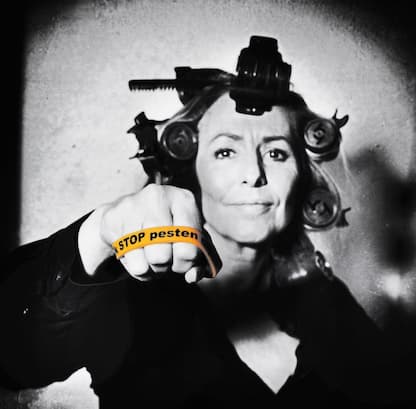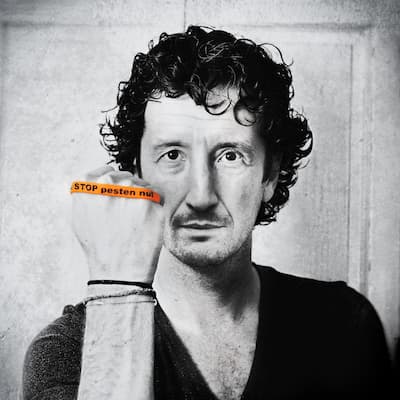Bij pesten gaat vaak de aandacht naar het kind dat gepest wordt en wordt al snel een weerbaarheidstraining aangeboden. Maar hebben kinderen met autisme die gepest worden die training echt nodig? Is het niet de groep die kan leren wat de meerwaarde kan zijn van diversiteit, en in dit specifieke geval, van autisme? Een blog van bijzonder hoogleraar Carolien Rieffe.
'Voor het Nationaal Autisme Congres (maart 2019) gaf ik een lezing over pesten en autisme. Bij pesten wordt vooral gedacht aan het afpakken van spullen of schelden. Echter, pesten kan veel subtieler zijn. Bijvoorbeeld, altijd als laatste gekozen worden bij het vormen van teams. Of, wat we zien in onze observaties op schoolpleinen: één kind mag niet van de glijbaan naar beneden, een ander kind blijft er pontificaal voorzitten. Zodra het eerste kind via het trappetje afdruipt, verdwijnt de menselijke blokkade en glijden alle andere kinderen wel vrolijk naar beneden. Waar de eerste vorm van pesten duidelijk aantoonbaar is, vooral als er getuigen zijn, is deze tweede vorm dat niet.
Acceptatie door de groep
Dus waar moet je beginnen als je er bij wilt horen? Als je niet perse met alle spelletjes op het schoolplein of groepsactiviteiten in de klas mee wilt doen, maar wel gehoord wilt worden als jij ergens een mening over hebt? Bovendien, keer op keer (subtiel of niet subtiel) gepest worden, dat verandert je. Kinderen en jongeren ontwikkelen meer angst, meer schaamte, en gaan zich anders gedragen. Dat maakt het nog lastiger om opgenomen te worden in een groep, of op zijn minst geaccepteerd te worden.
In een vicieuze cirkel
Kinderen en jongeren, maar ook volwassenen, met autisme worden vaker gepest dan anderen. Wij hebben onderzoek gedaan naar de langdurige effecten van pesten onder jongeren (9 tot 15 jaar oud) met en zonder autisme. We zagen dat jongeren die vaker gepest worden, inderdaad meer schaamte ontwikkelen. Echter, vooral jongens met autisme rapporteerden ook in toenemende mate boosheid. Daarmee word je natuurlijk ook weer een makkelijker doelwit voor pesters.
Als we kijken naar de vertaling van deze onderzoeksuitkomsten naar de praktijk: Wat kunnen professionals, ouders, of mensen met autisme dan doen? Voor de hand ligt om te focussen op emotieregulatieproblemen bij jongeren met autisme. Ook kan gedacht worden aan het aanbieden van een weerbaarheidstraining of sociale vaardighedentraining? Echter, is dat niet ‘blaming the victim’?
Sociale vaardigheden trainen: niet bij pesten
Kinderen en jongeren worden om zoveel redenen gepest: de verkeerde kleur bril, flaporen, gehoorverlies, anders zijn vanwege het autisme. Daarbij vindt de meerderheid dat het de schuld is van het slachtoffer zelf. Als we de kinderen die gepest worden vertellen dat ze een sociale vaardigheidstraining nodig hebben, wordt dat beeld nog eens bevestigd. Dan is de boodschap: “Jij bent niet goed genoeg. Als jij je anders zou gedragen, dan mag je wel mee doen.” Natuurlijk is een sociale vaardigheidstraining nooit verkeerd, velen van ons zouden daar baat bij hebben, maar dat zou niet gekoppeld moeten zijn aan gepest worden. Bij pesten moet de aandacht niet gaan naar het kind dat toevallig in de rol van ‘target’ is gekomen, maar naar al die anderen: de pestkop die meestal de aanstichter is, de helpers, én de stilzwijgende, toekijkende groep, die daarmee pestgedrag legitimeert.
Groepsproces
Pesten is een groepsproces. Eén kind kan de klas niet veranderen. Bovendien, verdwijnt het ene kind dat altijd de klos was, dan vindt de groep wel weer een nieuw slachtoffer. Kortom, de individuele leden van de groep hebben een aantal essentiële dingen om te leren. Bewustzijn over anders-zijn, bijvoorbeeld. Hoe is het als je niet alles hoort wat er gezegd wordt in de klas, of als je niet begrijpt waarom de anderen lachen? Een dag met oordopjes in kan al een grote verandering brengen in het bewustzijn hierover. Maar ook dat je best anders mag zijn, en er ook bij hoort. Inclusiviteit betekent niet homogeniteit, maar juist acceptatie van en respect voor diversiteit.
Diversiteit positief benadrukken
Bovendien, waarom zou er niet een enorme meerwaarde kunnen zitten juist in het anders-zijn? Alle individuen met autisme verschillen natuurlijk ook onderling, maar een paar kenmerken die vaker voorkomen bij individuen met autisme, en die een positief effect op anderen of de groep kunnen hebben, zijn bijvoorbeeld behoefte aan regelmaat, duidelijke, concrete afspraken maken; eerlijkheid, je krijgt de waarheid als je er om vraagt; en loyaliteit, beloftes nakomen.
Het groepsproces veranderen
Op het Nationaal Autisme Congres heb ik twee succesvolle anti-pest programma’s besproken die inzetten op verandering van de omgeving, het groepsproces, inclusief de leerkrachten, ouders, en alle kinderen in de klas of school:
- KiVa (uit Finland, in Nederland vooral door Veenstra (Groningen) verspreid);
- NoTrap (uit Italië, ontwikkeld o.a. door Menesini).
Een opmerking na afloop was “Mooie lezing, maar het ging niet meer echt over autisme?” En dat klopt, want de aanpak van pesten gaat verder dan een focus op het kind dat gepest wordt.
Tekst: Carolien Rieffe
Dit blog verscheen ook op het Leiden Psychology Blog in het kader van de Autismeweek 2019.
When it comes to bullying, we often focus on the victim, who is then often offered social skills training. Yet, when children with autism are bullied, is this really appropriate?
Perhaps the others should learn the value added by diversity, in this case, autism?
Difficult to pinpoint
'At the Dutch National Autism Conference (March 2019), I gave a lecture on bullying and autism. Most people associate bullying with name-calling or physical abuse. Fewer people think of the subtler forms of bullying, like always being last to be picked for the team. Or being excluded from play. For example, in the playground we observed one child being stopped from going down the slide by another who blocked his path. As soon as the excluded child climbed back down the steps, the blockade ended and other children happily slid down. Although the first form of bullying is clearly identifiable, the second is not, and often goes unnoticed or is difficult to pinpoint.'
To be accepted by the group
Not only children and adolescents, but also adults with autism are bullied more often than others. So where to start if you want to be part of the group? For example, if you don’t necessarily want to participate in all group activities, but do want to be heard at times to express your opinion on things? Moreover, being socially excluded, time and time again, changes a person. These children and adolescents develop more fear and shame as a result, and start to behave differently. This, in turn, makes it even harder for them to be accepted by the group.
The person bullied ends up in a vicious circle
We studied the longitudinal effects of bullying on adolescents with and without autism (9 to 15 years old). The findings confirm that adolescents with and without autism develop more shame as a result of bullying. The young people with autism who reported more bullying, also reported increased levels of anger. More anger, in turn, may more easily trigger bullies, so the person bullied ends up in a vicious circle. When trying to translate these research findings to practical use: what could professionals, parents, or people with autism do now? The first solution that comes to mind might be to focus on emotion regulation problems in adolescents with autism, or to offer them social skills training. But does that not amount to blaming the victim?
Social skills training shouldn’t be raised in the context of bullying
Children and adolescents are bullied for many different reasons: for having the wrong color glasses, or sticking out ears, or for being different due to hearing loss or autism. The majority of others, including those not actively involved, think the victim is to blame: “He asked for it”. So if we tell children who are bullied that they need social skills training, we are confirming this image. The message to the targeted child is: You are not good enough. If you behaved better, or fitted in better, you would not be bullied. Of course, there’s nothing wrong with social skills training, and many of us could benefit from it, but it shouldn’t be raised in the context of bullying. If we want to tackle bullying, we should not focus on the targeted child, but on all the others involved: the bully, his or her helpers, and the complicit group of onlookers who legitimize the bullying through their silent approval.
Bullying is always a group process
One child cannot change the group. Moreover, if that particular targeted child moves to another school, someone else will become the target. In other words, all children in the group have to learn important new insights, such as better awareness of what it is like to be different. What is it like to sit in class and not understand the jokes, or not hear what has been said? Even wearing earplugs for a day could be a start. But it’s also important to take on board the idea that someone can be different and yet still be a welcomed member of the group. Inclusion does not mean homogeneity, but acceptance and respect for each other’s differences.
Why not honor the enrichment of diversity?
All individuals with autism are unique. But there are certain strengths that can contribute positively to group that can more often be observed in individuals with autism than in those without. The need for orderliness: making clear appointments and plans. Honesty: if you ask for the truth, you’ll get it. And loyalty: keeping promises.
To change the group process
'At the Dutch National Autism Conference, I presented two successful anti-bullying programs that aim to change the group process, by including the teachers, parents, and all children in the class or school:
- KiVa (from Finland, implemented in the Netherlands by Veenstra, Groningen)
- NoTrap (from Italy, developed by Menesini and others)
One remark after my lecture was ‘Nice lecture, but not so much on autism, perhaps?’. And that is correct, because if we want to tackle bullying, we should look beyond the targeted child and focus on the group environment instead.'
Tip van de redactie
Heb je haast? Navigeer dan snel naar:
► Scholen & Professionals Kenniscentrum Pesten in het Onderwijs
- Of navigeer direct naar de informatie per functionaris: Schooldirectie & MT / Anti-pest coördinator / Leerkracht / Mentor / Ouderraad & MR
- Leerlingen & opvoeders: Kinderen & Jongeren (Leerlingen) / Ouders & Opvoeders
► Sportverenigingen Kenniscentrum Pesten in de Sport
- Of navigeer direct naar de informatie per functionaris: Bestuurders / Coaches, Trainers & Begeleiders / (Top)Sporters & Scheidsrechters
- Jonge leden & ouders Kinderen & Jongeren (Leerlingen) / Ouders & Opvoeders
► Werkgevers Kenniscentrum Pesten op het Werk
- Of navigeer direct naar de informatie per functionaris: Directie en bestuurders / HRM / MT en Leidinggevenden / Medewerkers / Ondernemersraden / Vertrouwenspersonen
► Ouderen Kenniscentrum Pesten in Woonzorgcentra

Breng snel een bezoekje aan ...
► Kenniscentrum (Klassiek) Pesten
► Kenniscentrum Online pesten (cyberpesten)
► Kennisbank & Downloadcentrum o.a. Beleid & Factsheets / Handleidingen / Lesmaterialen / Posters / Wetenschappelijke Onderzoeken
► Ik word gepest, wat kan ik doen
Stichting Stop Pesten Nu is het enige Erkende Goede Doel tegen Pesten in Nederland!







